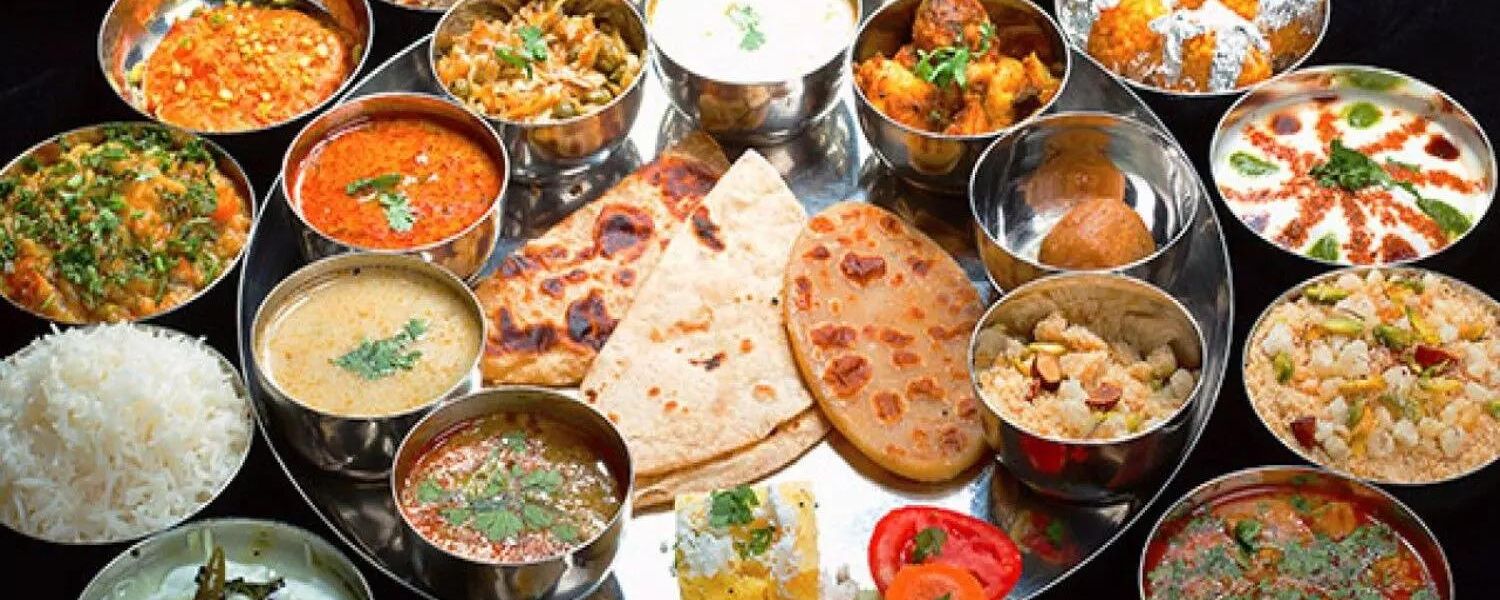Welcome to the heart of Rajasthan, Jaipur proudly embodies the essence of Rajasthani culture in every aspect of its being.
Serving as the capital city, Jaipur stands as a beacon of heritage and tradition, where the echoes of history resonate through its vibrant streets and majestic monuments.
However, the Jaipur culture is a testament to the rich tapestry of Rajasthani customs, reflected in the intricate designs of traditional Jaipur culture clothing, the lyrical cadence of the local language, and the enthusiasm of celebrated festivals.
One cannot overlook the architectural marvels that adorn Jaipur, each structure narrating tales of a bygone era. From the glorious Hawa Mahal to the imposing Amber Fort, these monuments stand as timeless tributes to the city’s regal past.
Moreover, Jaipur’s cultural landscape is further enriched by its exquisite handicrafts, including the famed blue pottery, intricately crafted juttis, and ornate jewels that adorn its denizens.
1. Art and Crafts

Additionally, into the rich tapestry of Jaipur Culture, where art and craft intertwine to tell tales of a bygone era. Weather, the historical tapestry of Rajasthan, two eminent royal families, the Mughals, and Rajputs, reigned supreme, their kingdoms steeped in artistic prowess.
These noble dynasties shared a genuine passion for creativity, nurturing the most skilled artisans of their time, some even hailing from distant lands. The legacy of their patronage lives on, etched intricately onto textiles, pottery, and footwear, each piece a testament to the master craftsmanship of yore.
Furthermore, wander through the lanes of the pink city and be greeted by the gaze of ancient statues, each one a silent guardian of Jaipur’s artistic heritage. These artifacts embody the creative finesse of their creators and serve as windows into the vibrant culture that thrives within the walls of Rajasthan’s capital. Experience the allure of Jaipur culture Wikipedia, where every stroke of a brush and every chisel mark narrates a story of artistic splendor and regal magnificence.
2. Performing Arts

Experience the vibrant tapestry of Jaipur Culture through its rich Performing Arts scene. Nestled within the heart of this ancient city, you’ll discover a treasure trove of live performances that capture the essence of Rajasthan’s heritage.
From captivating street circuses to soul-stirring plays and annual events, each showcase offers a glimpse into the cultural soul of Jaipur.
Furthermore, delight in the mesmerizing Ghoomar dance accompanied by the melodious strains of the sarangi, or lose yourself in the enchanting rhythms of folk and devotional songs, resonating with the traditional instruments of “garha and khartal.” Echoing through time, the legacies of tribes like Bhopa and Kalbeliya infuse the air with their artistic prowess.
Moreover, Jaipur’s artistic legacy extends beyond performance, with ancient paintings still revered and exhibited today. While the essence remains rooted in tradition, contemporary influences add a dynamic flair, as seen in the fusion music of artists like Rapirya Baalm and the comedic stylings of Murari. Embark on a cultural odyssey through Jaipur’s Performing Arts, where every performance is a celebration of its storied past and vibrant present.
3. Food of Jaipur

However, the rich tapestry of Jaipur’s culture through its delectable cuisine. Jaipur, renowned for its vibrant heritage, offers a culinary journey steeped in Jaipur culture and tradition and authentic Rajasthani food in Udaipur. At the heart of Jaipur’s gastronomic delights lies its iconic dishes, such as Dal Bati Churma, a quintessential Rajasthani delicacy composed of lentils, baked wheat rolls, and sweetened cereal.
Indulge in the rustic charm of Missi Roti, a traditional bread made from gram flour, perfect for savoring with spicy curries. Every culinary exploration of Jaipur is complete with sampling its array of sweets, including Ghevar, Feeni, Gajak, and Chauguni ke laddu, each offering a symphony of sweetness and texture.
So, for a truly immersive experience, immerse yourself in the vibrant street Jaipur culture food scene during local festivals and fairs, where you can relish the flavors of Jaipur amidst the bustling atmosphere. Discover the essence of Jaipur’s culture through its culinary treasures, where every bite narrates a story of tradition and heritage of traditional khana restaurant Rajasthani cuisine.
4. Fairs And Festivals

Additionally, in the vibrant tapestry of India’s cultural landscape, Rajasthan stands out with its rich heritage and myriad festivities. Among its many jewels, Jaipur, the Pink City, encapsulates the essence of Rajasthan’s cultural splendor.
Moreover, Fairs and festivals are integral to the fabric of Jaipur’s culture, each offering a unique glimpse into the region’s traditions and rituals.
Jaipur’s cultural calendar also includes captivating events such as the Chasku Fair, Elephant Fair, and Chhat ka Mela, each celebrating different facets of life in Rajasthan.
These festivals not only showcase the state’s cultural richness but also serve as a platform for communities to come together in celebration and camaraderie, making Jaipur a true epitome of India’s cultural diversity.
5. People and Languages

Weather, in the vibrant tapestry of Jaipur’s culture, the people stand out as a captivating reflection of Rajasthan’s rich heritage. Adorned in vibrant, traditional attire, the locals add splashes of color to the city’s landscape.
Their conversations resonate with a melodic blend of languages, including Rajasthani, Hindi, and English, each adding unique flavor to the cultural mosaic.
Despite modern influences, many Rajasthanis proudly uphold their age-old traditions, often seen donning the quintessential turban as a symbol of reverence for their heritage.
However, Jaipur’s population, bustling with energy, counts approximately 3,073,350 souls, with Hindus comprising the majority at 78%, followed by Muslims at 18.6%, Jains at 2.3%, and a diverse array of others making up the remaining 1.0%.
6. Jaipur Literature Festival

The Jaipur Literature Festival (JLF), a celebration of intellect and creativity, unfolds annually against the backdrop of the historical places in Rajasthan Hotel Clarks Amer in the vibrant city of Jaipur.
Embracing the essence of Jaipur culture facts, this literary extravaganza is a melting pot of ideas, stories, and voices from around the globe. Since its inception in 2006, JLF has grown into the world’s largest free literary festival, attracting avid readers, seasoned writers, and aspiring artists alike.
At the heart of JLF lies its remarkable lineup of over 550 speakers and artists who converge to share insights and perspectives on literature, culture, politics, and more.
However, from acclaimed authors to emerging talents, the festival offers a platform for diverse voices to intertwine, inspire, and ignite conversations that transcend boundaries.
Each January, JLF transforms Jaipur into a bustling hub of literary exchange, fostering a dynamic atmosphere where ideas flourish and connections thrive. The Jaipur Literature Festival is a beacon of creativity, enlightenment, and cultural enrichment for enthusiasts worldwide with its rich tapestry of sessions, workshops, and performances.
7. Dance and music

Dandiya Raas, a vibrant socio-religious folk dance, is an integral part of Jaipur’s culture. This lively dance form, synonymous with Navratri celebrations, holds immense popularity not just in Jaipur but across the globe.
Accompanied by the spirited music of Rajasthan, Dandiya Raas embodies the essence of Rajasthan’s rich traditions. The melodic tunes and rhythmic beats of traditional Rajasthani folk songs like “Kalbeliya,” “Chirmi,” “Phag,” “Ghoomar,” “Terah Taal,” and “Langas” infuse energy into the dance performances.
Jaipur, renowned for its cultural heritage, embraces Dandiya Raas as a cherished tradition, often showcased during cultural events, festivals, and religious ceremonies.
Furthermore, the music and dance reflect the vibrant hues of daily life in Rajasthan, weaving stories of joy and devotion. With its rhythmic footwork and colorful attire, Dandiya Raas epitomizes the spirit of Jaipur’s cultural identity, captivating audiences with its vitality and charm.
Conclusion
In conclusion, the essence of Jaipur culture resonates deeply with the rich heritage and traditions of Rajasthan. With its status as the capital city, Jaipur stands as a beacon of prosperity and cultural vibrancy.
From the intricate designs of its architecture to the colorful attire adorning its people, every aspect exudes the timeless charm of Rajasthani heritage. Visitors are enchanted by the majestic monuments that stand as testaments to Jaipur’s glorious past. Moreover, the city’s thriving handicraft industry, featuring renowned specialties like blue pottery, handmade juttis, and exquisite jewels, further exemplifies its cultural prowess.
The culture of Jaipur is not just a remnant of the past but a vibrant and dynamic entity that still plays a significant role in shaping the city’s identity. It continues to enchant the hearts of anyone who has the privilege of experiencing its magnificence. Embracing Jaipur’s culture is to immerse oneself in a world where tradition meets modernity, creating a tapestry of beauty and authenticity that is truly unparalleled.
FAQ
Q1: What makes Jaipur’s architectural heritage stand out?
A1: Jaipur’s architectural heritage stands out for its distinctive pink hue, earning it the moniker “The Pink City.” This color, symbolizing hospitality, was introduced by Maharaja Ram Singh in 1876. The city boasts magnificent forts like Amer and Nahargarh, as well as intricately designed palaces such as Hawa Mahal and City Palace.
Q2: How does Jaipur’s culinary scene reflect its culture?
A2: Jaipur’s culinary scene is deeply intertwined with its culture, featuring signature dishes like dal baati churma. This Rajasthani delicacy combines lentil curry (dal), baked bread (baati), and sweetened wheat flour (churma), showcasing the city’s rich culinary heritage and flavors passed down through generations.
Q3: What role do traditional music and dance play in Jaipur’s culture?
A3: Traditional music and dance are integral to Jaipur’s culture, with iconic performances like the Ghoomar dance from Jodhpur and the Kalbeliya dance from Jaisalmer gaining international recognition. Folk music genres like Bhopa, Chang, and Teratali add to the cultural vibrancy, enriching the tapestry of Jaipur’s heritage.
Q4: How does Jaipur blend history, tradition, and modernity?
A4: Jaipur seamlessly blends history, tradition, and modernity, which is evident in its architectural marvels, culinary delights, and cultural performances. While preserving its regal heritage, Jaipur embraces modern influences, offering visitors a dynamic experience where the past coexists harmoniously with the present.










